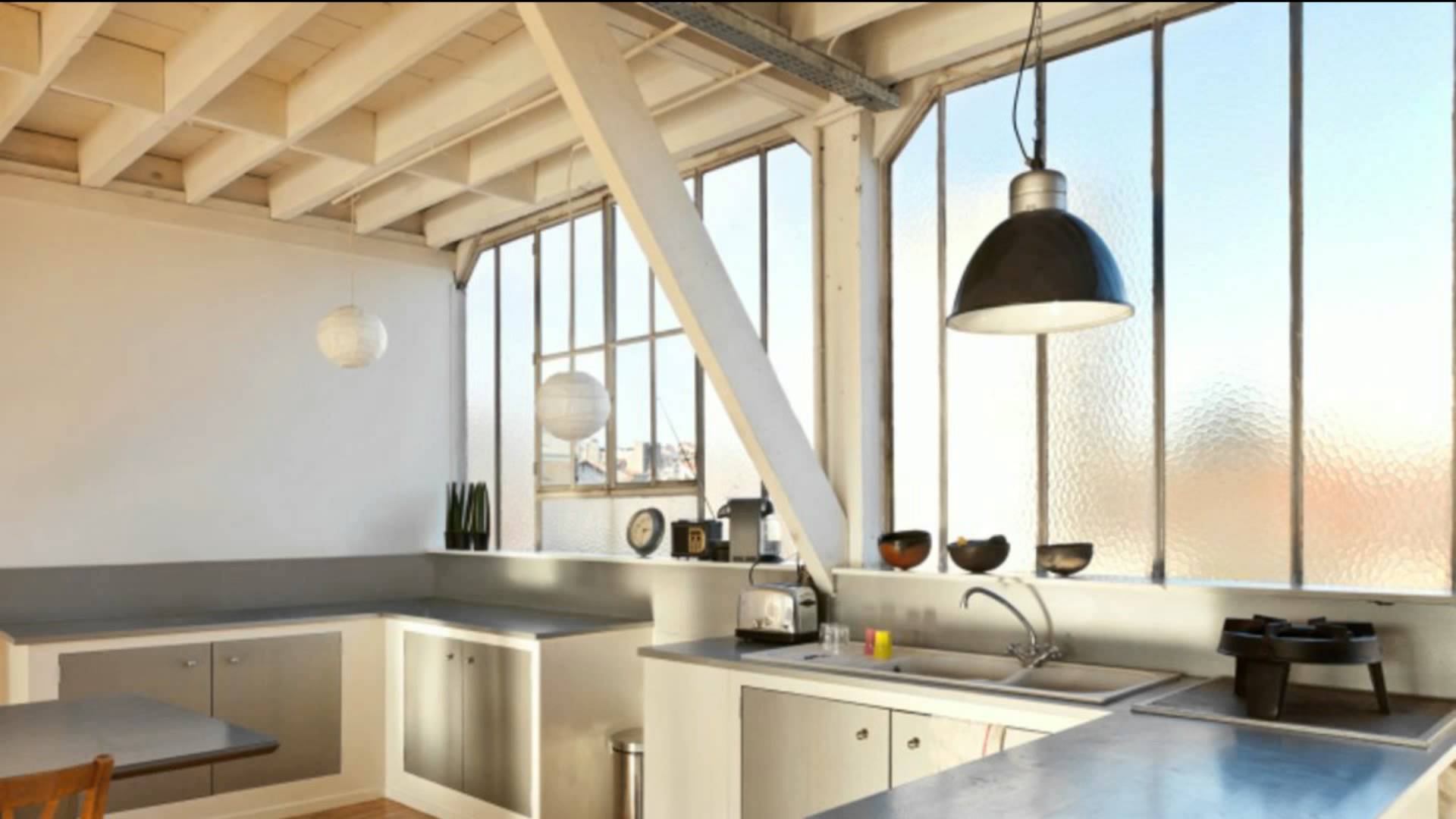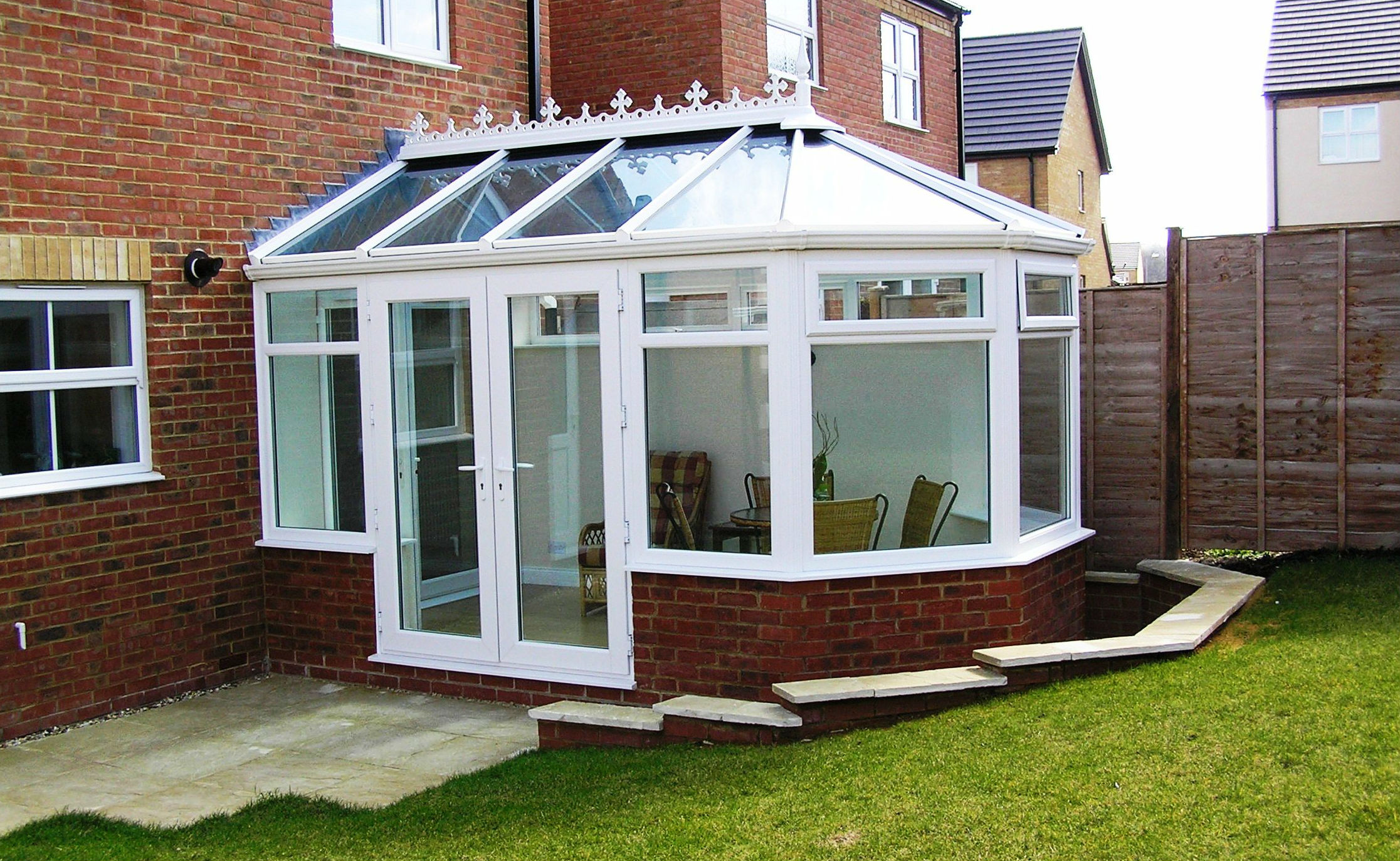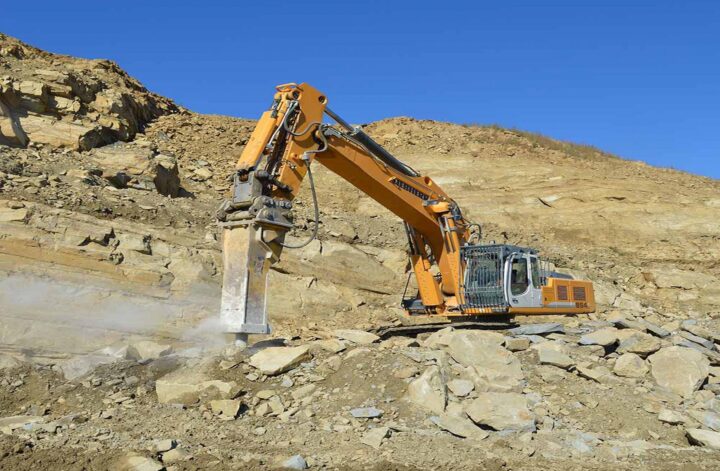Scaffolding is an essential material in almost any large scale construction project and the boards used are among the key components of any scaffolding structure. They provide a working surface and can be positioned at varying heights, such that the user is provided stable and varied access to the exterior of a building during construction.
Scaffolding boards
Traditionally, boards are made from solid planks of wood, often a soft wood such as European Whitewood. In order for this to be durable and long lasting, it needs to be dried out and seasoned. Furthermore, if the board is being used in an outdoor area which is particularly exposed to rain and moisture, the wood is often required to be treated to prevent any rot or softening setting in.
The board ends are protected by metal plates called hoop irons or sometimes called nail plates. These add extra strength to the board. The inward pressure prevents the board from splitting and the metal plate itself protects the end of the board from damage and wear and tear.
Size
The main thing to think about when buying boards is the size of the board required in terms of length, width and thickness. The length of a board is largely dependent on the frame you have chosen to use. The boards should be long enough so that they comfortably cover the area between the frames. Boards can vary in thickness and are usually available in 38 mm, 50 mm and 63 mm. The thickness does not make a huge amount of difference to the job, but thicker boards last longer and are generally less likely to warp. Thicker boards are generally heavier and more cumbersome when it comes to storage. The width of a board is also worth considering and it is largely dependent upon the amount of room the scaffolding user requires to maneuver around the construction area.
The toe board is the working board and must also be accompanied by a guard rail to prevent any construction workers from falling from the scaffold. Most boards are 225mm in width. Although wider boards are available, extra space for construction workers can be made by adding an extra board, parallel to the toe board and effectively doubling the working area.
Security
Boards and planks don’t necessarily need to be secured because their weight generally makes them sturdy. However, in order to minimise risk on a construction site, it is important to consider securing the boards using putlog clips, lashing them to the scaffolding with rope, or even clamping them down with another piece of tubing running perpendicular to the boards. Securing the boards will prevent accidents from board slippage or even boards being blown off the structure during very high winds.




Даркнет — это анонимная часть онлайн-пространства, доступ к которой только через защищенные браузеры, такие как Tor.
В даркнете можно найти как официальные, так и противозаконные ресурсы, включая обменные сервисы и различные площадки.
Одной из крупнейших торговых площадок является Блэк Спрут, которая занималась продаже различных товаров, включая запрещенные товары.
bs2best at
Подобные площадки довольно часто функционируют на анонимные платежи для повышения конфиденциальности операций.
При этом, власти периодически блокируют крупные незаконные платформы, однако на их месте возникают другие торговые точки.
We offer a comprehensive collection of trusted pharmaceutical products for various needs.
Our online pharmacy provides speedy and secure order processing right to your door.
All products comes from certified suppliers to ensure authenticity and compliance.
Feel free to explore our online store and make a purchase with just a few clicks.
If you have questions, Our support team are here to help whenever you need.
Stay healthy with affordable medical store!
https://www.bawabetalquds.com/wall/blogs/8137/Clomid-A-Groundbreaking-Solution-for-Fertility-Challenges
Despite the rise of modern wearable tech, mechanical watches are still everlasting.
A lot of enthusiasts value the artistry that goes into traditional timepieces.
In contrast to smartwatches, which need frequent upgrades, mechanical watches hold their value over time.
https://sxemazarabotka.ru/forums/topic/strah-nochi/page/4/#post-793169
High-end manufacturers still produce exclusive traditional watches, proving that their desirability is as high as ever.
To a lot of people, an automatic timepiece is not just an accessory, but a reflection of craftsmanship.
While smartwatches provide extra features, mechanical watches represent an art form that remains unmatched.
Ordering drugs online is much easier than going to a physical pharmacy.
There’s no reason to stand in queues or worry about closing times.
Internet drugstores let you order prescription drugs without leaving your house.
Many websites offer special deals in contrast to brick-and-mortar pharmacies.
https://thungthoeng.go.th/forum/suggestion-box/61746-what-e-pharmacies-do-you-prefer
Plus, you can browse alternative medications without hassle.
Fast shipping adds to the ease.
Have you tried buying medicine online?
Любители азартных игр всегда могут найти актуальное альтернативный адрес игровой платформы Champion и наслаждаться популярными автоматами.
На платформе доступны самые топовые игровые автоматы, от олдскульных до новых, и последние разработки от топовых провайдеров.
Когда основной портал не работает, альтернативная ссылка поможет моментально получить доступ и продолжить игру.
https://casino-champions-slots.ru
Весь функционал полностью работают, включая открытие профиля, пополнение счета и кэш-ауты, и, конечно, бонусную систему.
Пользуйтесь обновленную ссылку, и наслаждаться игрой без блокировок!
Чем интересен BlackSprut?
Платформа BlackSprut вызывает обсуждения разных сообществ. Но что это такое?
Данный ресурс предлагает интересные возможности для тех, кто им интересуется. Визуальная составляющая сайта выделяется удобством, что позволяет ей быть интуитивно удобной даже для новичков.
Необходимо помнить, что BlackSprut имеет свои особенности, которые делают его особенным в определенной среде.
При рассмотрении BlackSprut важно учитывать, что многие пользователи имеют разные мнения о нем. Некоторые подчеркивают его функциональность, другие же относятся к нему неоднозначно.
В целом, эта платформа продолжает быть предметом обсуждений и удерживает заинтересованность разных слоев интернет-сообщества.
Доступ к БлэкСпрут – узнайте у нас
Хотите найти свежее ссылку на БлэкСпрут? Мы поможем.
https://bs2best
Периодически ресурс перемещается, поэтому нужно знать новое зеркало.
Мы мониторим за актуальными доменами чтобы поделиться актуальным линком.
Посмотрите актуальную версию сайта прямо сейчас!
Здесь вы можете найти различные слот-автоматы.
На сайте представлены подборку автоматов от топ-разработчиков.
Каждый слот предлагает уникальной графикой, увлекательными бонусами и честными шансами на выигрыш.
https://ordoggaming.com/the-thrill-and-excitement-of-the-casino-experience/
Пользователи могут играть в демо-режиме или выигрывать настоящие призы.
Интерфейс просты и логичны, что облегчает поиск игр.
Если вы любите азартные игры, данный ресурс стоит посетить.
Присоединяйтесь прямо сейчас — тысячи выигрышей ждут вас!
The role of gut health in overall well-being is a growing area of interest. Understanding the microbiome and its influence on digestion and immunity is fascinating. Learning about probiotics, prebiotics, and diet impacts gut health. Awareness of medical preparations targeting digestive issues is relevant. Knowing about antacids, laxatives, or treatments for IBS requires information. Finding evidence-based insights into gut health separates fact from fad. The iMedix podcast explores emerging health science like the microbiome. It serves as a medical podcast discussing the latest research understandably. Tune into the iMedix Health Podcast for gut health information. iMedix: Your Personal Health Advisor includes digestive wellness.
The role of pharmacists extends beyond dispensing medications. Understanding their expertise in drug interactions and side effects is valuable. Learning how pharmacists contribute to medication management improves safety. Familiarity with the advice they can offer on over-the-counter medical preparations is practical. Knowing they are accessible healthcare professionals encourages consultation. Finding information that highlights the pharmacist’s role enhances healthcare navigation. The iMedix podcast values interdisciplinary perspectives in healthcare. It functions as a health care podcast recognizing various professional roles. Tune into the iMedix health podcast for insights into the pharmacy world. Welcome to iMedix, promoting collaborative health understanding.
На этом сайте вы можете испытать широким ассортиментом слотов.
Игровые автоматы характеризуются живой визуализацией и интерактивным игровым процессом.
Каждый слот предлагает особые бонусные возможности, улучшающие шансы на успех.
1xbet казино слоты
Слоты созданы для любителей азартных игр всех мастей.
Вы можете играть бесплатно, после чего начать играть на реальные деньги.
Испытайте удачу и насладитесь неповторимой атмосферой игровых автоматов.
Self-harm leading to death is a tragic phenomenon that touches millions of people around the globe.
It is often linked to emotional pain, such as bipolar disorder, hopelessness, or chemical dependency.
People who struggle with suicide may feel overwhelmed and believe there’s no solution.
how to commit suicide
We must talk openly about this topic and support those in need.
Mental health care can save lives, and talking to someone is a crucial first step.
If you or someone you know is in crisis, get in touch with professionals.
You are not forgotten, and help is available.
На нашем портале вам предоставляется возможность испытать большим выбором игровых слотов.
Слоты обладают живой визуализацией и захватывающим игровым процессом.
Каждая игра даёт индивидуальные бонусные функции, улучшающие шансы на успех.
1win
Слоты созданы для как новичков, так и опытных игроков.
Есть возможность воспользоваться демо-режимом, а затем перейти к игре на реальные деньги.
Попробуйте свои силы и окунитесь в захватывающий мир слотов.
На этом сайте вы можете найти интересные игровые автоматы.
На сайте представлены ассортимент игр от популярных брендов.
Каждый слот отличается интересным геймплеем, увлекательными бонусами и высокой отдачей.
http://dnslookup.fr/casinoreg.net
Вы сможете запускать слоты бесплатно или делать реальные ставки.
Интерфейс максимально удобны, что облегчает поиск игр.
Если вас интересуют слоты, этот сайт — отличный выбор.
Начинайте играть уже сегодня — тысячи выигрышей ждут вас!
На данной платформе вы обнаружите интересные слоты казино на платформе Champion.
Коллекция игр представляет проверенные временем слоты и новейшие видеослоты с яркой графикой и разнообразными функциями.
Любая игра оптимизирован для максимального удовольствия как на компьютере, так и на мобильных устройствах.
Независимо от опыта, здесь вы найдёте подходящий вариант.
champion casino бонус
Игры запускаются в любое время и не нуждаются в установке.
Кроме того, сайт предоставляет программы лояльности и полезную информацию, чтобы сделать игру ещё интереснее.
Попробуйте прямо сейчас и оцените преимущества с казино Champion!
Здесь представлены игровые автоматы из казино Вавада.
Каждый пользователь сможет выбрать слот на свой вкус — от традиционных игр до видеослотов разработок с яркой графикой.
Платформа Vavada открывает широкий выбор слотов от топовых провайдеров, включая игры с джекпотом.
Все игры работает в любое время и подходит как для компьютеров, так и для телефонов.
игровые автоматы вавада
Вы сможете испытать настоящим драйвом, не выходя из любимого кресла.
Навигация по сайту проста, что обеспечивает быстро найти нужную игру.
Начните прямо сейчас, чтобы почувствовать азарт с Vavada!
On this platform, you can discover a great variety of online slots from top providers.
Visitors can enjoy retro-style games as well as modern video slots with vivid animation and bonus rounds.
If you’re just starting out or a casino enthusiast, there’s a game that fits your style.
casino slots
All slot machines are instantly accessible round the clock and compatible with desktop computers and mobile devices alike.
No download is required, so you can get started without hassle.
Site navigation is intuitive, making it convenient to explore new games.
Sign up today, and discover the world of online slots!
Сайт BlackSprut — это довольно популярная систем в darknet-среде, предлагающая разнообразные сервисы для пользователей.
На платформе предусмотрена удобная навигация, а визуальная часть не вызывает затруднений.
Гости отмечают отзывчивость платформы и жизнь на площадке.
bs2best
Площадка разработана на комфорт и безопасность при навигации.
Если вы интересуетесь альтернативные цифровые пространства, этот проект станет интересным вариантом.
Прежде чем начать лучше ознакомиться с информацию о работе Tor.
Here offers a large assortment of interior clock designs for any space.
You can check out minimalist and vintage styles to complement your home.
Each piece is carefully selected for its design quality and reliable performance.
Whether you’re decorating a cozy bedroom, there’s always a beautiful clock waiting for you.
modern stainless steel clocks
Our assortment is regularly renewed with trending items.
We care about secure delivery, so your order is always in good care.
Start your journey to perfect timing with just a few clicks.
На этом сайте предлагает поиска работы на территории Украины.
Здесь вы найдете актуальные предложения от уверенных партнеров.
Мы публикуем варианты занятости в различных сферах.
Полный рабочий день — выбор за вами.
https://my-articles-online.com/
Сервис простой и рассчитан на всех пользователей.
Начало работы займёт минимум времени.
Нужна подработка? — начните прямо сейчас.
Here, you can find a great variety of online slots from leading developers.
Players can experience classic slots as well as feature-packed games with high-quality visuals and interactive gameplay.
Even if you’re new or a casino enthusiast, there’s a game that fits your style.
casino games
All slot machines are instantly accessible 24/7 and designed for desktop computers and mobile devices alike.
All games run in your browser, so you can start playing instantly.
Site navigation is user-friendly, making it convenient to browse the collection.
Join the fun, and discover the thrill of casino games!
Новый летний период обещает быть стильным и нестандартным в плане моды.
В тренде будут асимметрия и минимализм с изюминкой.
Гамма оттенков включают в себя неоновые оттенки, подчеркивающие индивидуальность.
Особое внимание дизайнеры уделяют деталям, среди которых популярны макросумки.
http://www.forumdlainteligentnych.pun.pl/profile.php?action=view&id=1162
Снова популярны элементы модерна, в свежем прочтении.
На подиумах уже можно увидеть смелые решения, которые удивляют.
Не упустите шанс, чтобы чувствовать себя уверенно.
Were you aware that over 60% of people taking prescriptions experience serious pharmaceutical mishaps due to lack of knowledge?
Your health is your most valuable asset. All treatment options you make plays crucial role in your quality of life. Maintaining awareness about medical treatments should be mandatory for disease prevention.
Your health isn’t just about swallowing medications. Each drug affects your biological systems in unique ways.
Remember these life-saving facts:
1. Mixing certain drugs can cause health emergencies
2. Even common pain relievers have potent side effects
3. Altering dosages undermines therapy
To avoid risks, always:
✓ Research combinations with professional help
✓ Study labels completely prior to using any medication
✓ Speak with specialists about correct dosage
___________________________________
For professional medication guidance, visit:
https://community.alteryx.com/t5/user/viewprofilepage/user-id/577602
Our e-pharmacy provides a broad selection of medications at affordable prices.
Shoppers will encounter all types of remedies for all health requirements.
We work hard to offer safe and effective medications while saving you money.
Fast and reliable shipping provides that your order gets to you quickly.
Experience the convenience of shopping online with us.
suhagra 50